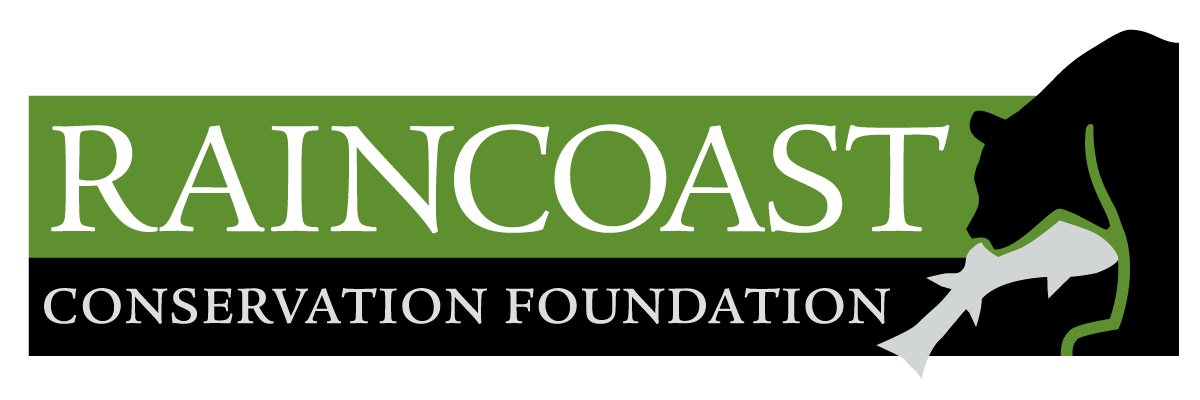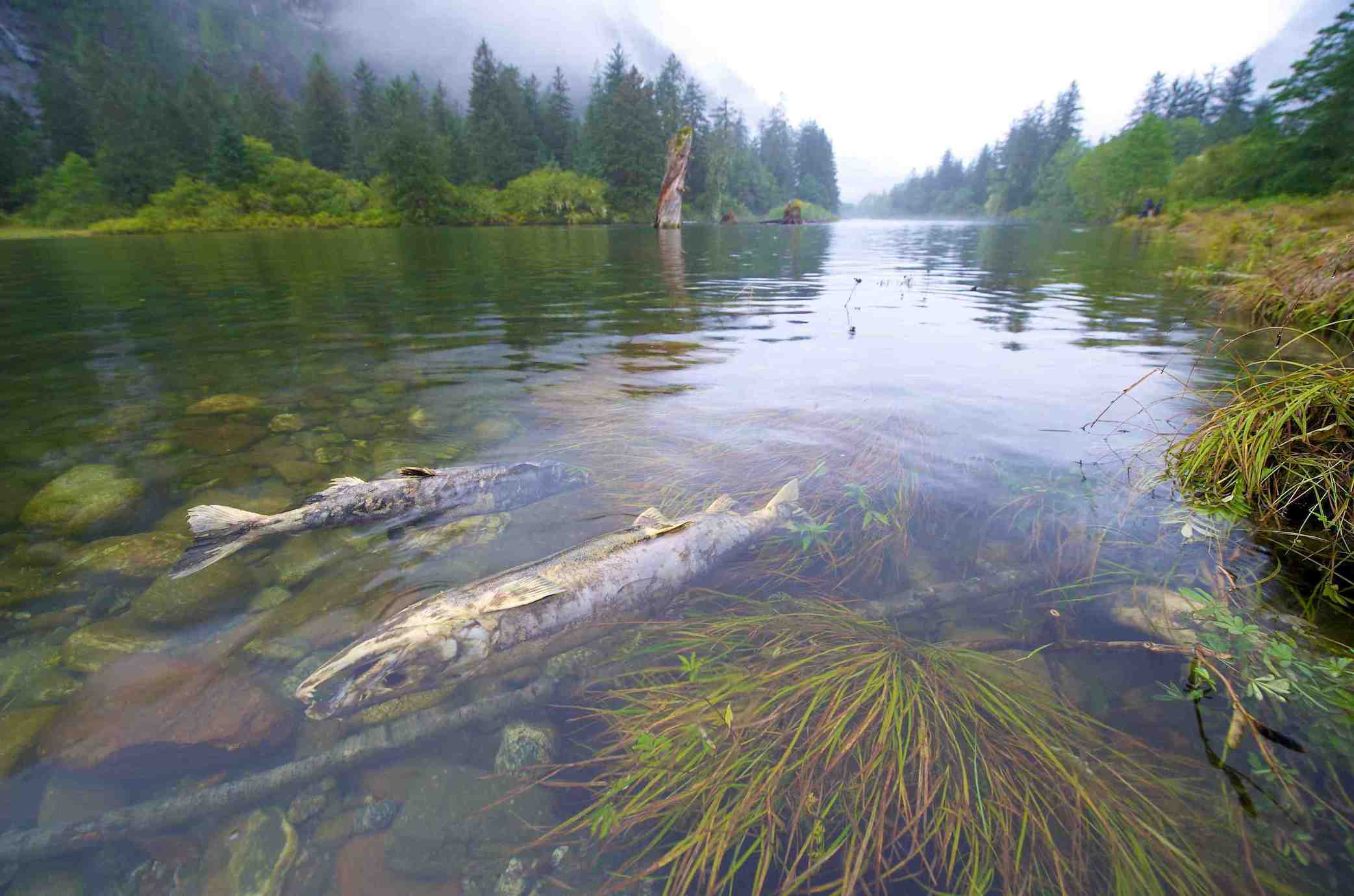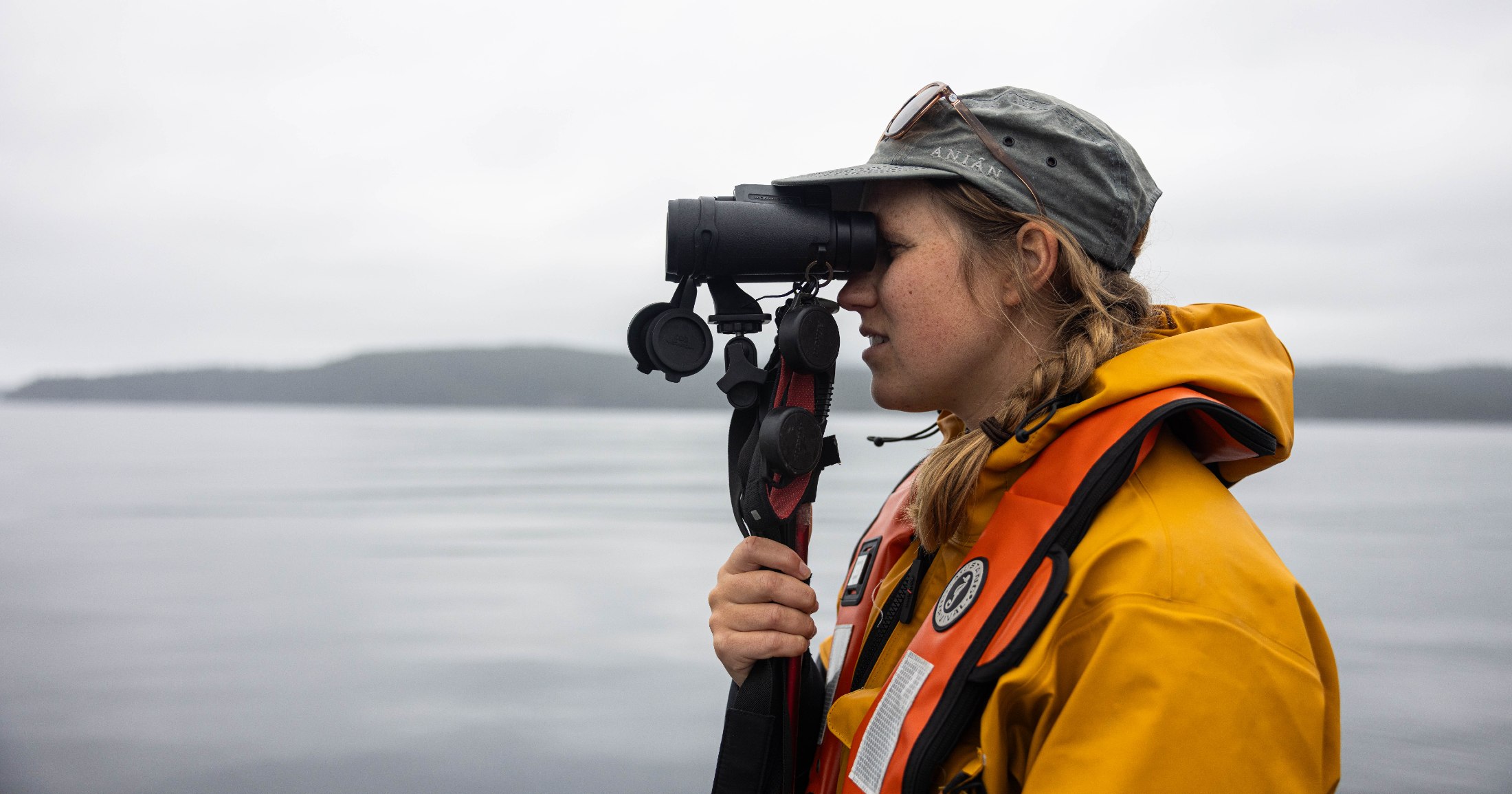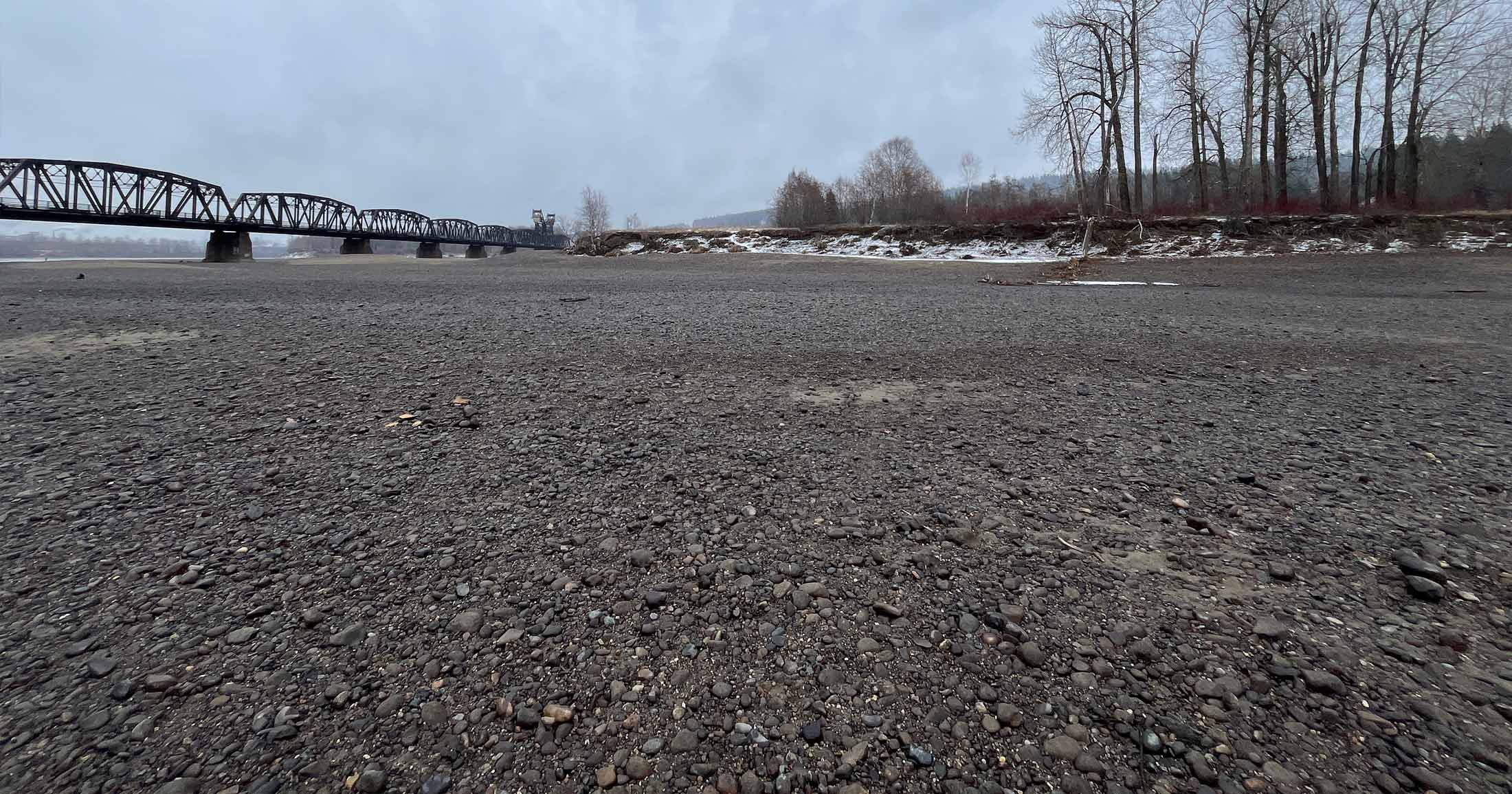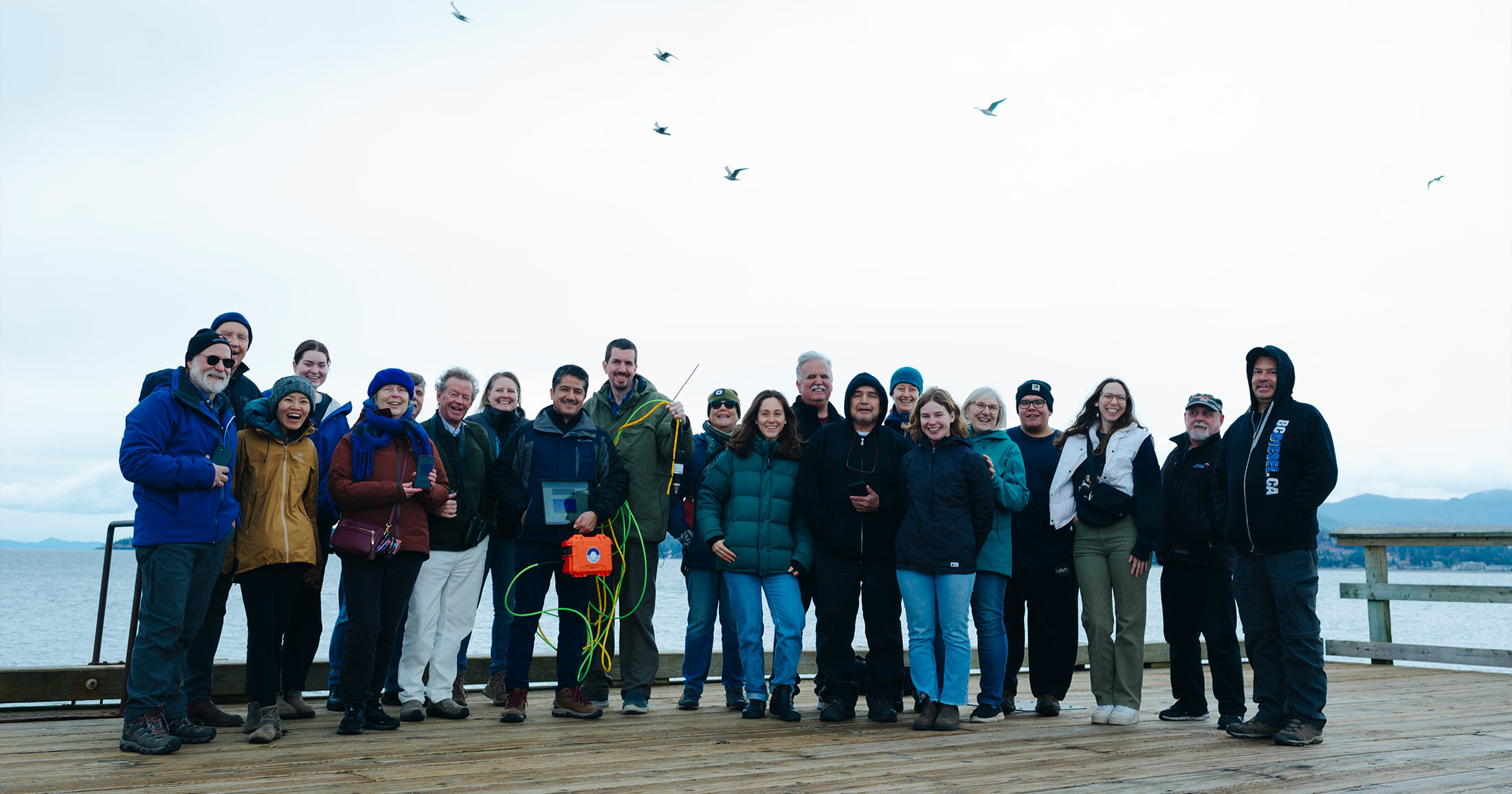Salmon Stream Ecology Project
Spawning salmon make an important contribution to marine, freshwater and forest ecosystems of our coast, interacting with mammals, birds, fish and amphibians. The decline in many salmon populations over the last century has drawn a lot of attention to conservation needs for salmon, but also for the stability of wildlife and ecosystems that rely on the energy and nutrients from these fish.
Chum and Coho Stream Ecology Project
Raincoast’s Chum and Coho Stream Ecology Project is part of a larger research program at Simon Fraser University (SFU) that focuses on the interactions between salmon and their environments. The SFU team set up long-term field studies to understand how human actions affect the decline or recovery of salmon. This includes affects on the salmon food web, changing nutrients flows to plants and animals in stream and forest habitats.
The Chum-Coho project set out to study the feedback loop between spawning chum salmon and juvenile coho salmon that use the same streams to spawn. Chum carcasses and eggs provide energy and nutrients to young coho during the 1-3 years they spend in the stream, affecting their growth, body condition and survival. The size of the young coho when they migrate influences their survival in the ocean. Coho are particularly susceptible to habitat disturbance because they rely on streams year-round.
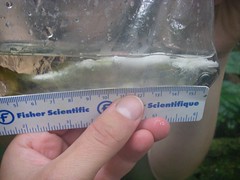
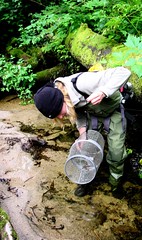
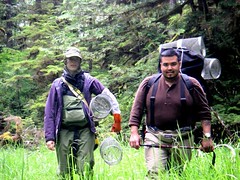
The project’s Principle investigator, Michelle Nelson, who recently completed her PhD, spent 5 field seasons visiting more than 25 streams. More than 4000 person-hours went into the capture and collection of 2000 juvenile salmon, hundreds of terrestrial and aquatic invertebrates, and plant material. Lab work required invertebrate measurements, content analysis of fish stomachs, isotope analysis, and aging coho from scales and ear bones (otoliths). Field work was based from Raincoast’s field station near Bella Bella, in the traditional territory of the Heiltsuk Nation, who are project partners through the Heiltsuk Fisheries Program.
Results
In 2014, the first paper was published from this study in the journal PLOS One. The research shows that juvenile coho abundance is up to three times higher in streams with abundant pink and chum spawners compared to streams with no pink or chum spawners. Further, juvenile coho benefit from feeding directly on spawning pink and chum salmon carcasses and eggs, but also benefit just from the nitrogen and phosphorus provided to the stream, with no direct access to meals from carcasses or eggs.
Abstract
Cross-boundary nutrient inputs can enhance and sustain populations of organisms in nutrient-poor recipient ecosystems. For example, Pacific salmon (Oncorhynchus spp.) can deliver large amounts of marine-derived nutrients to freshwater ecosystems through their eggs, excretion, or carcasses. This has led to the question of whether nutrients from one generation of salmon can benefit juvenile salmon from subsequent generations. In a study of 12 streams on the central coast of British Columbia, we found that the abundance of juvenile coho salmon was most closely correlated with the abundance of adult pink salmon from previous years. There was a secondary role for adult chum salmon and watershed size, followed by other physical characteristics of streams. Most of the coho sampled emerged in the spring, and had little to no direct contact with spawning salmon nutrients at the time of sampling in the summer and fall. A combination of techniques suggest that subsidies from spawning salmon can have a strong, positive, time-delayed influence on the productivity of salmon-bearing streams through indirect effects from previous spawning events. This is the first study on the impacts of nutrients from naturally-occurring spawning salmon on juvenile population abundance of other salmon species.
Support our mobile lab, Tracker!
Our new mobile lab will enable the Healthy Waters Program to deliver capacity, learning, and training to watershed-based communities. We need your support to convert the vehicle and equip it with lab instrumentation. This will allow us to deliver insight into pollutants of concern in local watersheds, and contribute to solution-oriented practices that protect and restore fish habitat.

